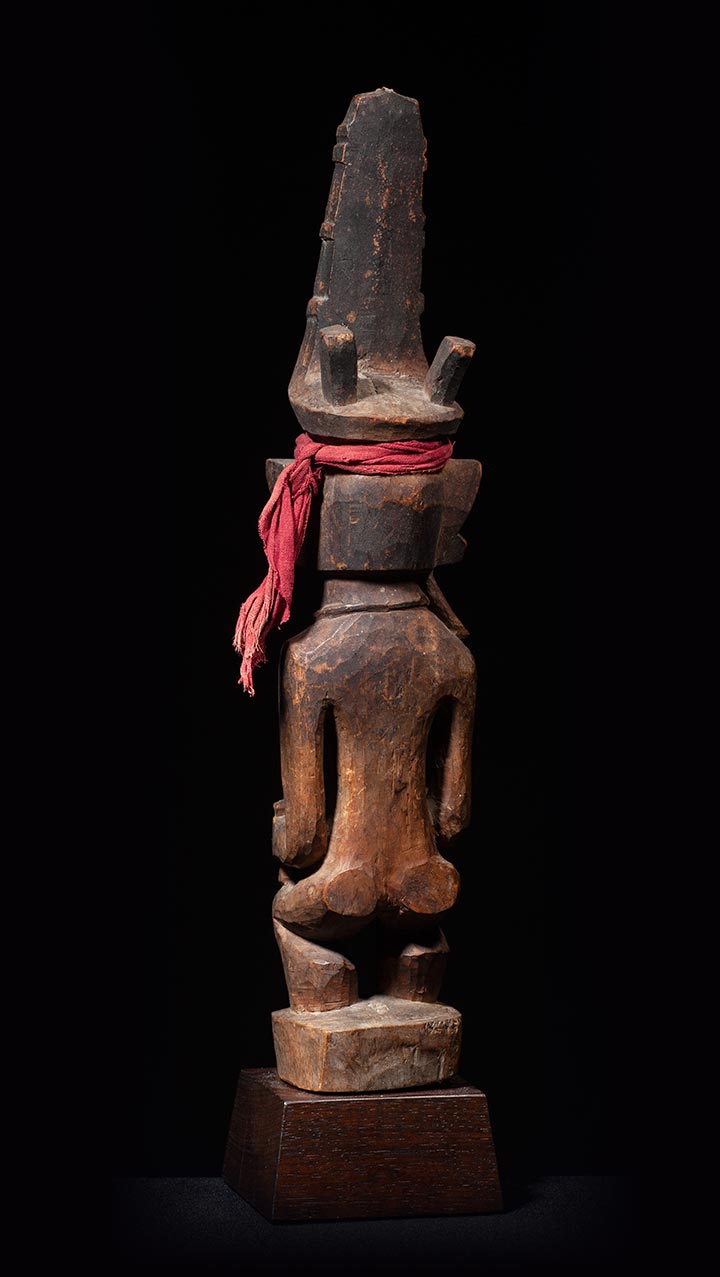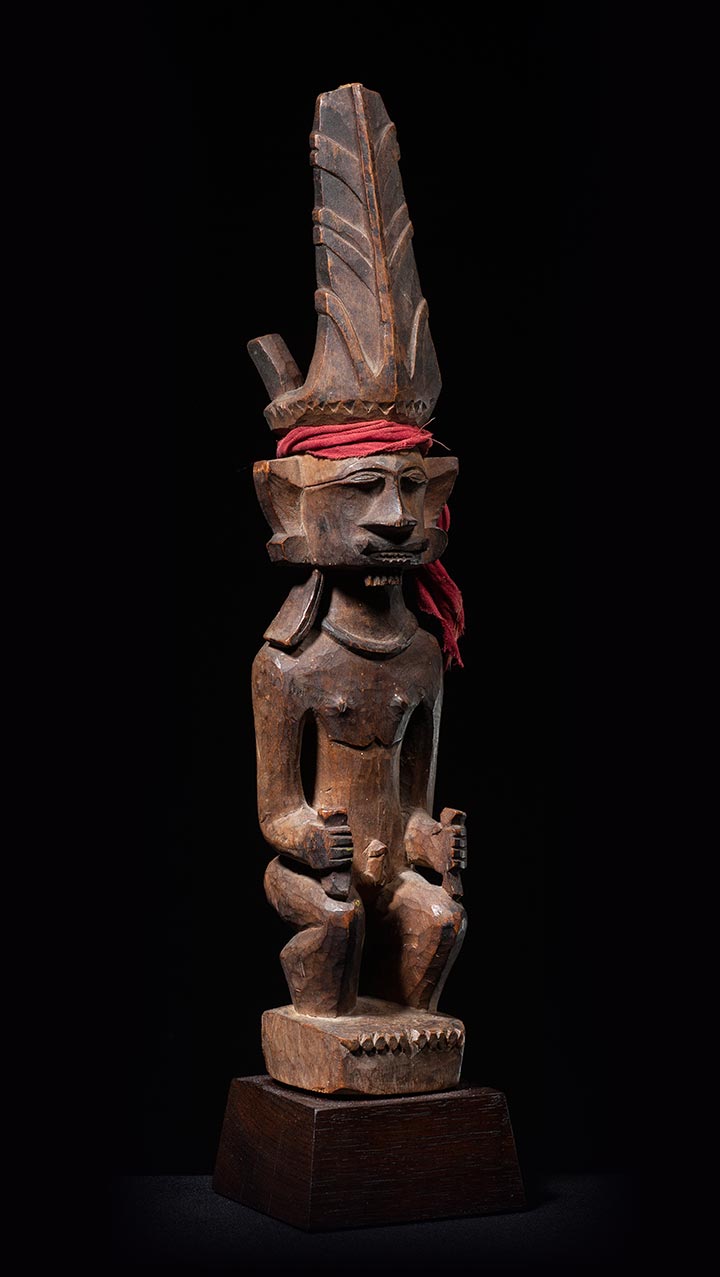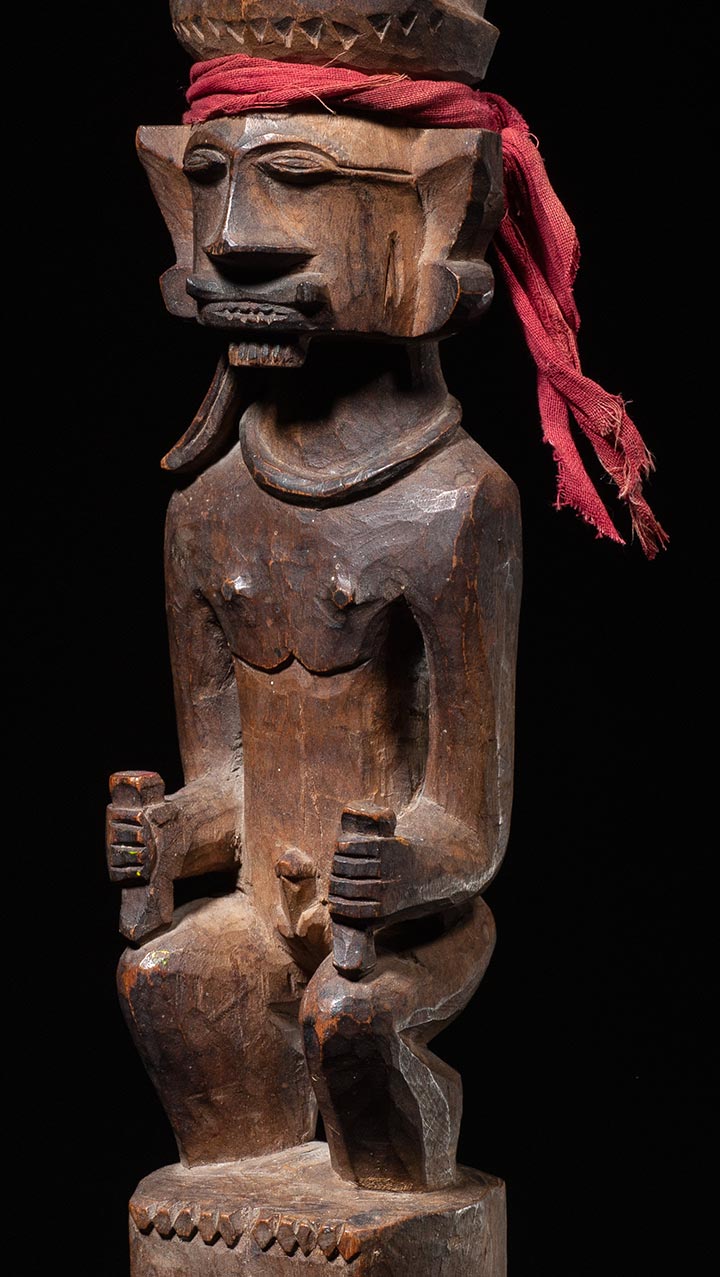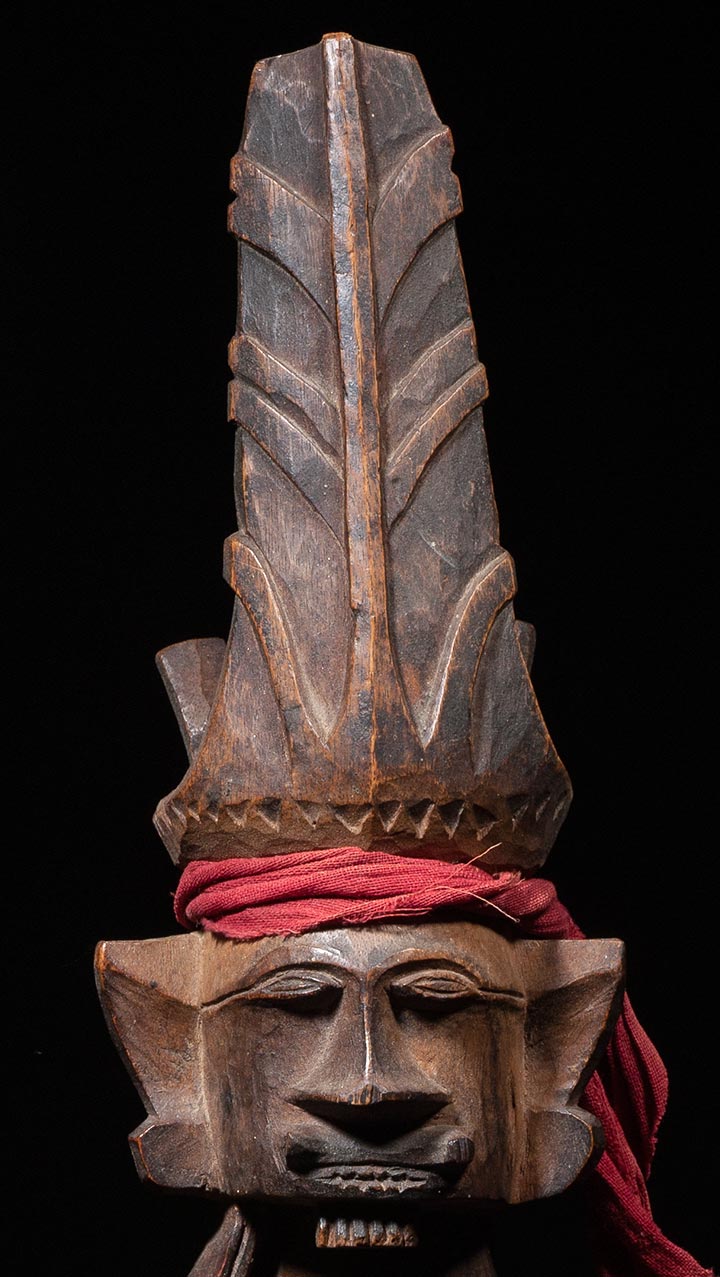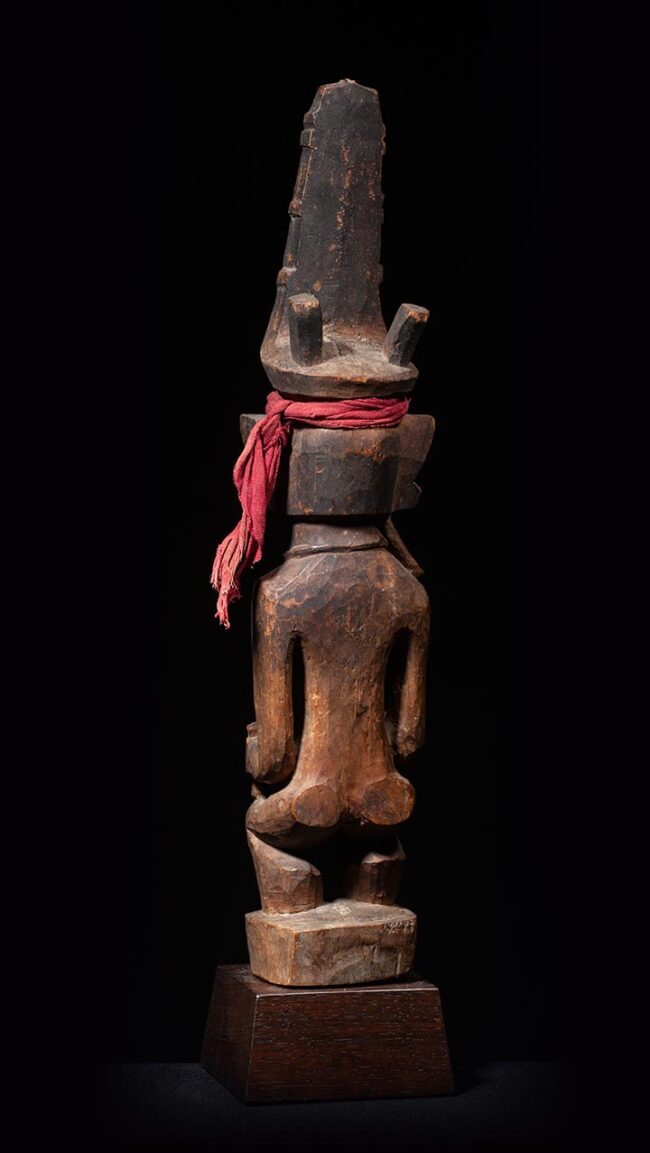Royal Ancestor Figure, Adu Zatua
Central Nias, Indonesia
19th c
Provenance: J. Leysner-Breton, born on Nias around 1910. Her father was a KNIL-soldier stationed on Nias, whereabouts not known. In 1930 she moved to Bandung, Java. Most probably she got the statue from her father. By descent to her Granddaughter
This Adu Zatua figure is a traditional sculpture that is believed to depict a powerful and revered royal ancestor of the Nias people. The figure is depicted standing with bent legs and holding batons in each hand, which is believed to symbolize the strength, power, and authority of the Adu Zatua as a spiritual leader and protector of the community. This statue is usually put in traditional houses or traditional ceremonies as a way to honor and respect the ancestor. The statue is also often depicted wearing traditional regalia, including a forked crown, a necklace made of coconut shells, and a wrapped base of the crown with old red trade cloth, which are all symbols of the ancestor’s status, power, prosperity, as red is a color that is often associated with these qualities in many Indonesian cultures.
Royal Ancestor Figure, Adu Zatua
Central Nias, Indonesia
19th c
Provenance: J. Leysner-Breton, born on Nias around 1910. Her father was a KNIL-soldier stationed on Nias, whereabouts not known. In 1930 she moved to Bandung, Java. Most probably she got the statue from her father. By descent to her Granddaughter
This Adu Zatua figure is a traditional sculpture that is believed to depict a powerful and revered royal ancestor of the Nias people. The figure is depicted standing with bent legs and holding batons in each hand, which is believed to symbolize the strength, power, and authority of the Adu Zatua as a spiritual leader and protector of the community. This statue is usually put in traditional houses or traditional ceremonies as a way to honor and respect the ancestor. The statue is also often depicted wearing traditional regalia, including a forked crown, a necklace made of coconut shells, and a wrapped base of the crown with old red trade cloth, which are all symbols of the ancestor’s status, power, prosperity, as red is a color that is often associated with these qualities in many Indonesian cultures.




